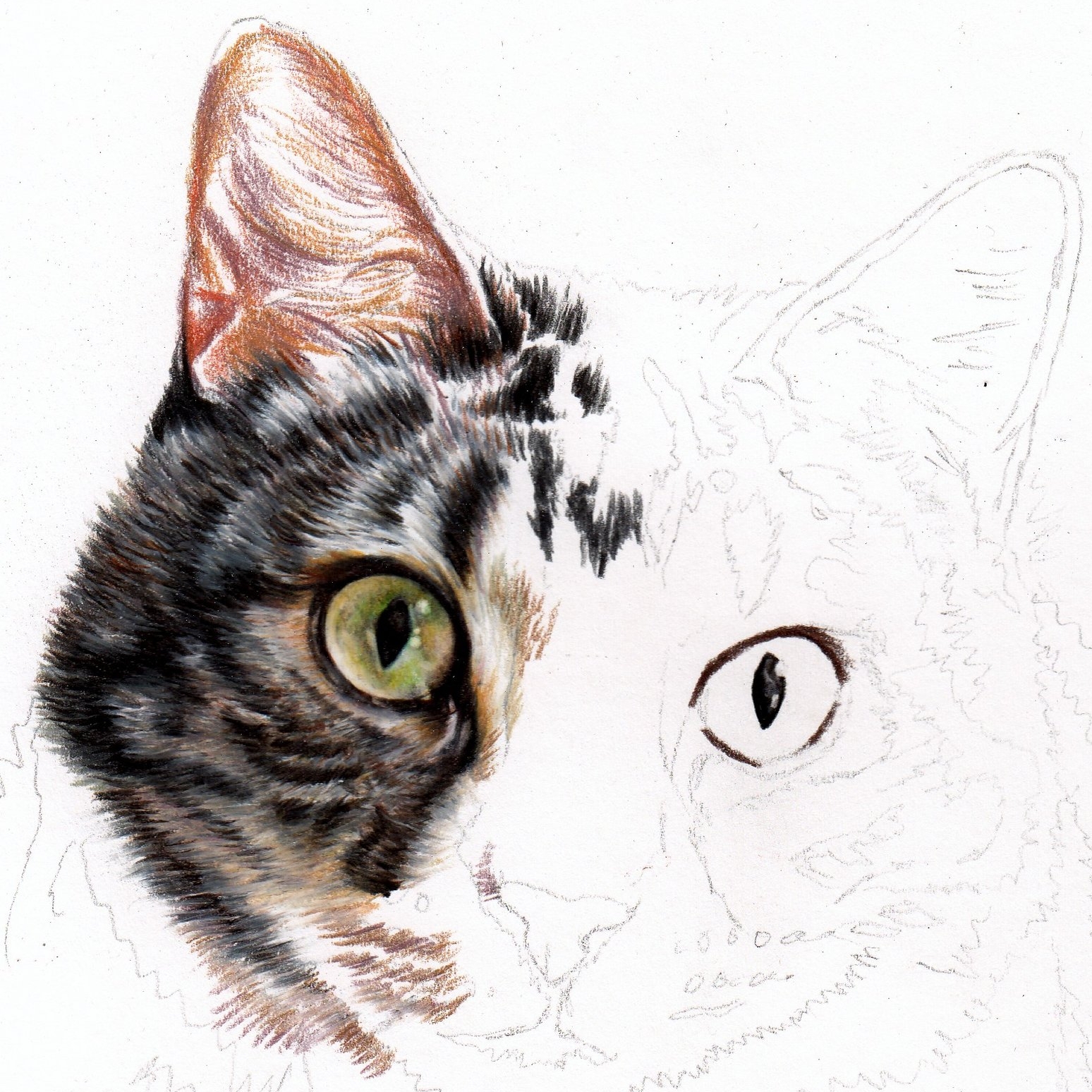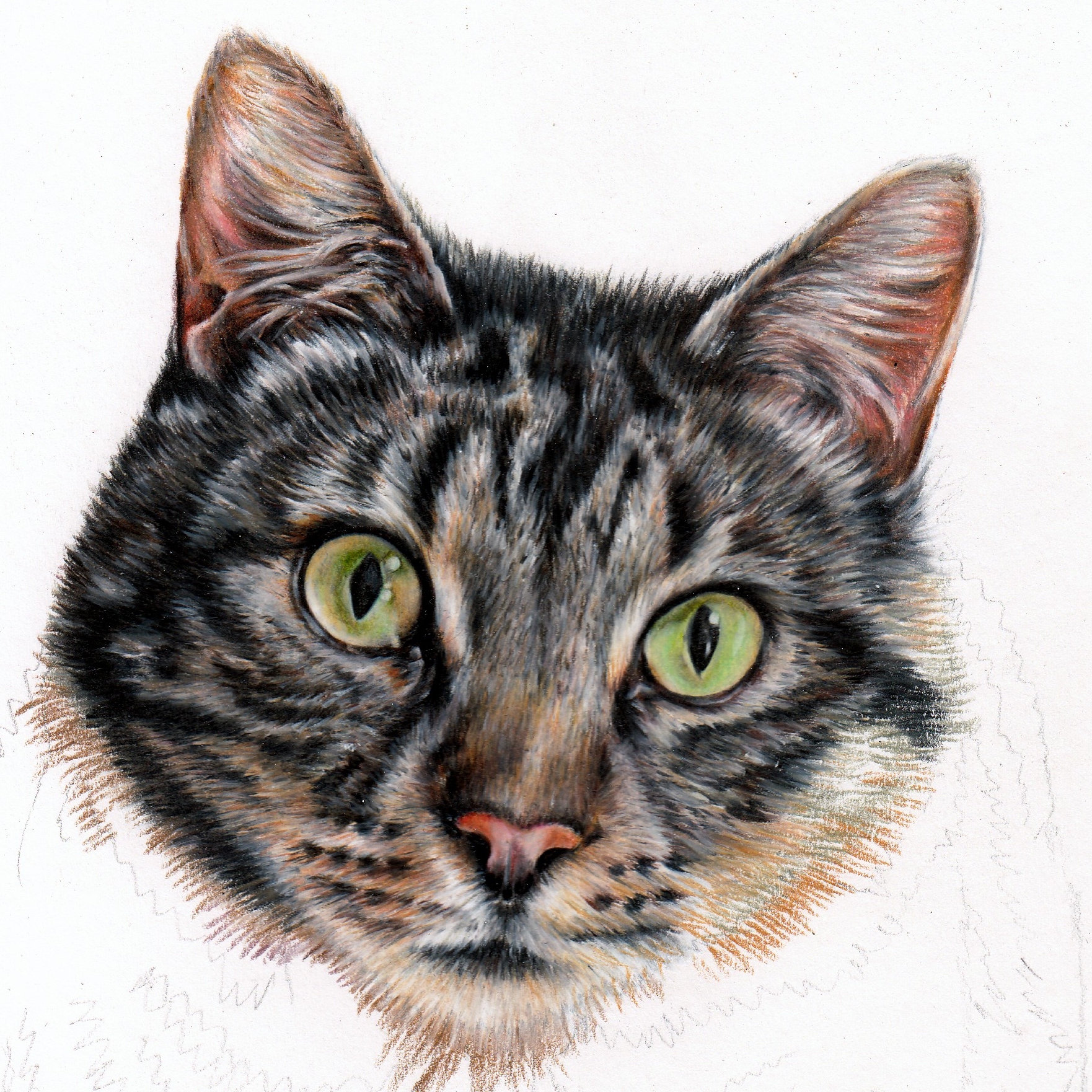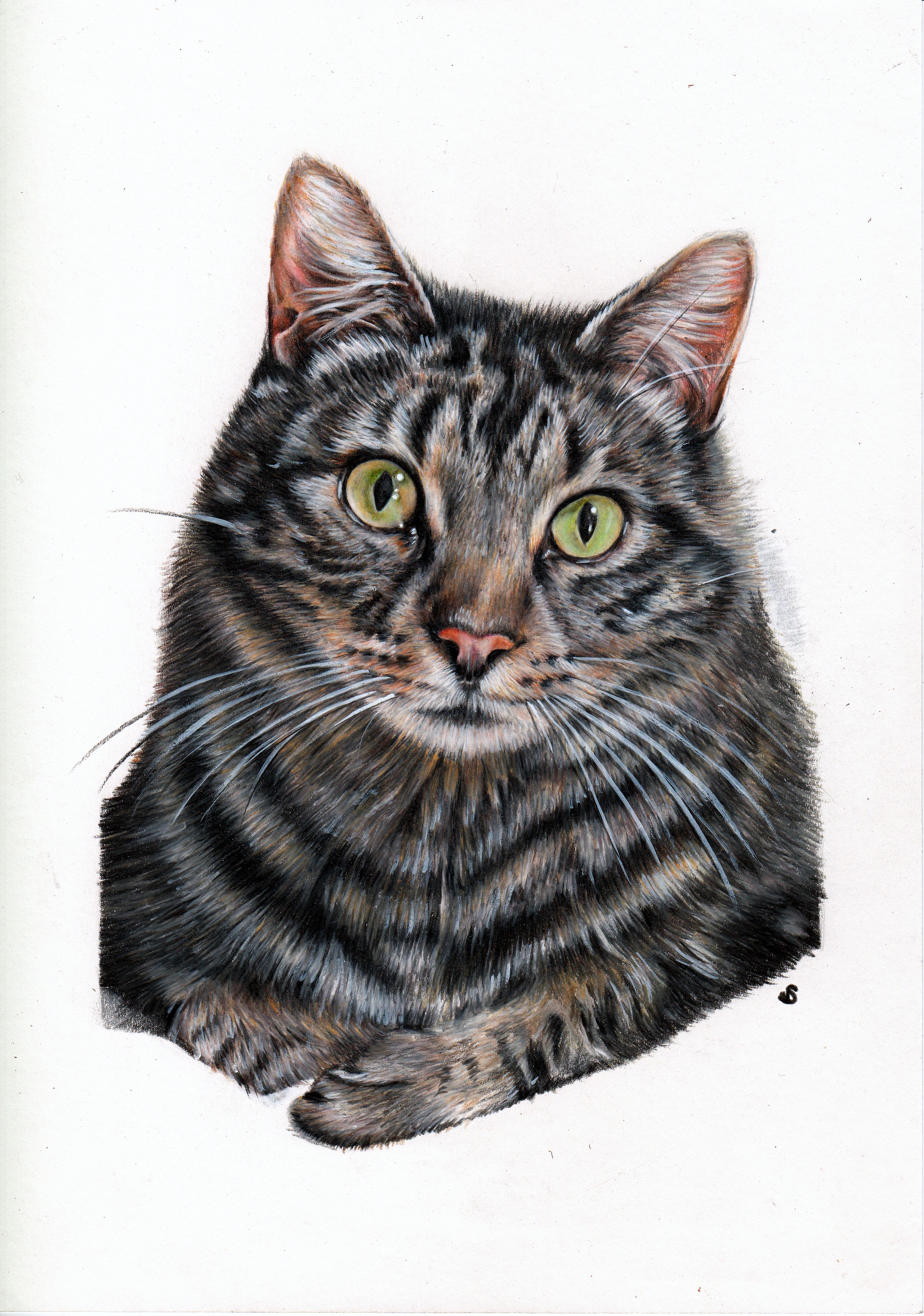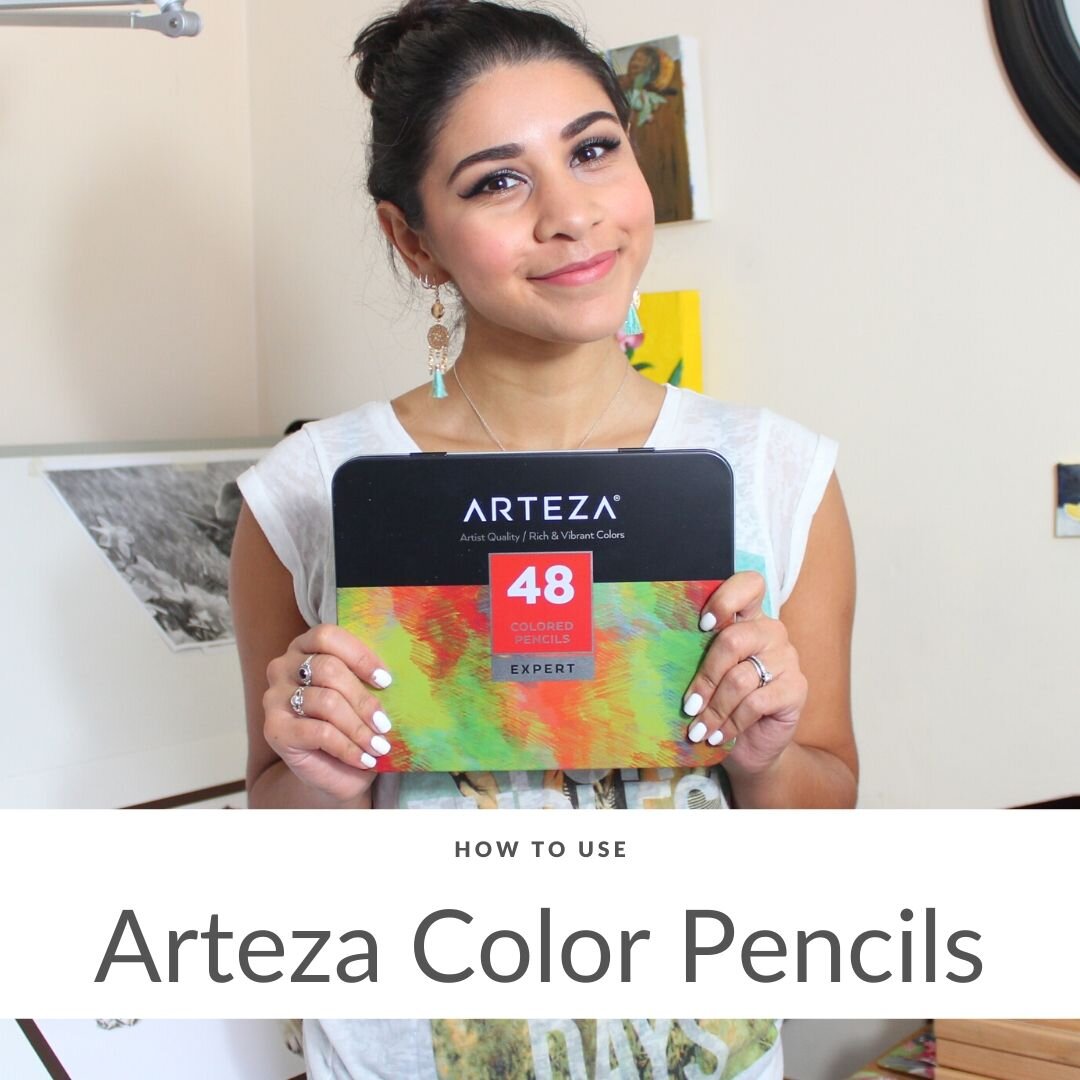How to Draw a realistic cat in colour pencil
When I started drawing for commissioned work I had no idea how much my customers loved to see the drawing progress of my work as well as receiving the final portrait. I developed a technique for taking pictures of my drawing process which has greatly influenced the way I draw. I have created this little tutorial as an insight into my drawing process. If you are an artist and want to learn more then please subscribe to my YouTube channel where there are more tutorials and LIVE drawing sessions every week.
Drawing the cat eye
After drawing the very basic outline of my subject, I start with the eye. I feel that the eyes are the most important part of any portrait. They capture the soul and character and are the first things you see when you look at a portrait. I can spend up to 8 hours working on just the eyes to make sure I get them right.
The eyes are also a great reference point to work from when drawing in the other features. They help you get the spacing and sizing right of the nose and sides of the face which are quite important for making the subject look the same as its picture.
2. Drawing one side of the face
My next stage of drawing would be to complete one side of the face. This makes for a great picture on social media because of the contrast between the line drawing and the coloured pencil drawing. It also gives me a great idea of how long the rest of the face will take me to complete.
The head of an animal always takes me a lot longer than drawing the body. There are so many different fur directions around the eyes, nose and ears, so you have to make sure you are following each change correctly otherwise the portrait will not look right.
3. Completing the head of the cat
I usually wait until I have completed the head of the pet (or person) before I go back to the beginning and make sure the contrast of my portrait is right. I have found that contrast is one of the most important parts of drawing in order to make your drawing look real. I compare my reference picture and make sure all white areas, such as reflections in the eyes, white hairs and whiskers, are bright white. White paint is a great way to do this and I have also recently discovered that a white gel pen is good for more control.
Once I have made sure that all the white areas are as a white as possible, I do the same comparison technique with the black area. Any shadows or stripes in the fur, or pupils in the eyes need to be as black as possible. Throughout the process of my drawing, I am always comparing colours and textures with my reference picture(s) to make sure it is as accurate as possible.
5. Drawing the cat’s body
Sometimes my portraits are just of the head but most of the time I do tend to draw full-body portraits. I would complete the body just as I have done the head, constantly looking at the reference photo and making sure all shadows or stripes are in the right place.
The body usually only takes me a few hours unless it's a tabby cat. They can take a lot longer since every stripe and curve has to be exactly in the right place to match the cat. Every tabby has slightly different markings even if they look the same at a glance. It’s all about the detail.
6. The whiskers
Last but not least I create bright and beautifully curved whiskers. Watch the video below to find the several ways of creating white hairs and whiskers. Subscribe to my channel for more tutorials and LIVE Draws!
Thank you for reading. Id love to know if you found this helpful in the comments below.
WHAT’S NEXT?
Do You Need Help Turning Your Passion Into A Real Career?
Click The Button Below To Get All The Help You Will Ever Need To Become A Real Artist!
Welcome
Hello, I’m Sema Martin and I have created this series of blog posts to help other artists on their journey to becoming great! I specialise in colour pencil as a medium and have created many pet portraits for customers all over the world. You can read more about my journey by clicking the button below.
